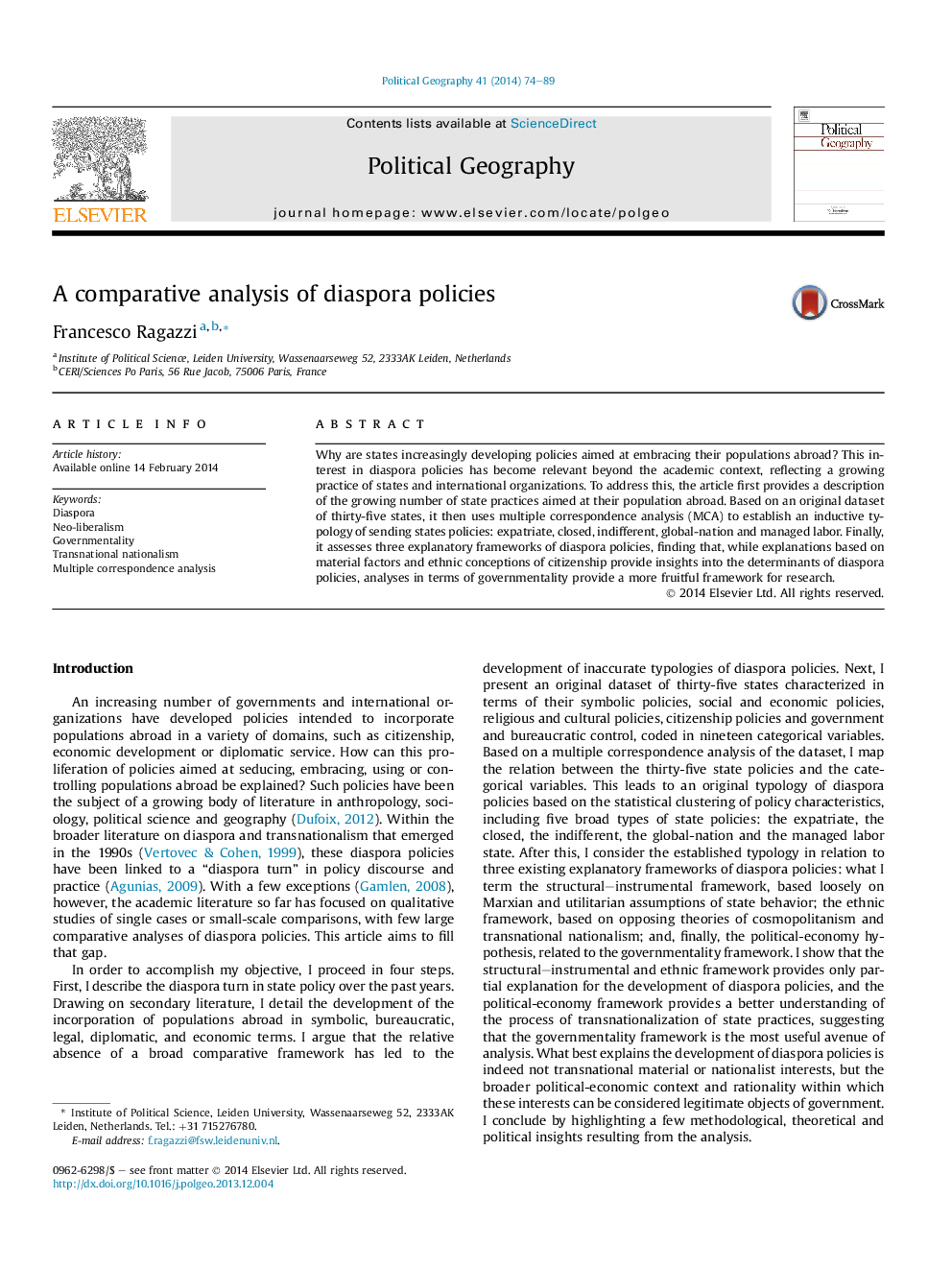| Article ID | Journal | Published Year | Pages | File Type |
|---|---|---|---|---|
| 1061936 | Political Geography | 2014 | 16 Pages |
•35 Diaspora policies are compared through multiple correspondence analysis.•Wealth and percentage of population abroad partly explain the type of diaspora policies.•These two factors fail to explain why states develop them.•Levels of remittances do not hold any explanatory power.•Governmentality best explains governments' transnational practices of power.
Why are states increasingly developing policies aimed at embracing their populations abroad? This interest in diaspora policies has become relevant beyond the academic context, reflecting a growing practice of states and international organizations. To address this, the article first provides a description of the growing number of state practices aimed at their population abroad. Based on an original dataset of thirty-five states, it then uses multiple correspondence analysis (MCA) to establish an inductive typology of sending states policies: expatriate, closed, indifferent, global-nation and managed labor. Finally, it assesses three explanatory frameworks of diaspora policies, finding that, while explanations based on material factors and ethnic conceptions of citizenship provide insights into the determinants of diaspora policies, analyses in terms of governmentality provide a more fruitful framework for research.
